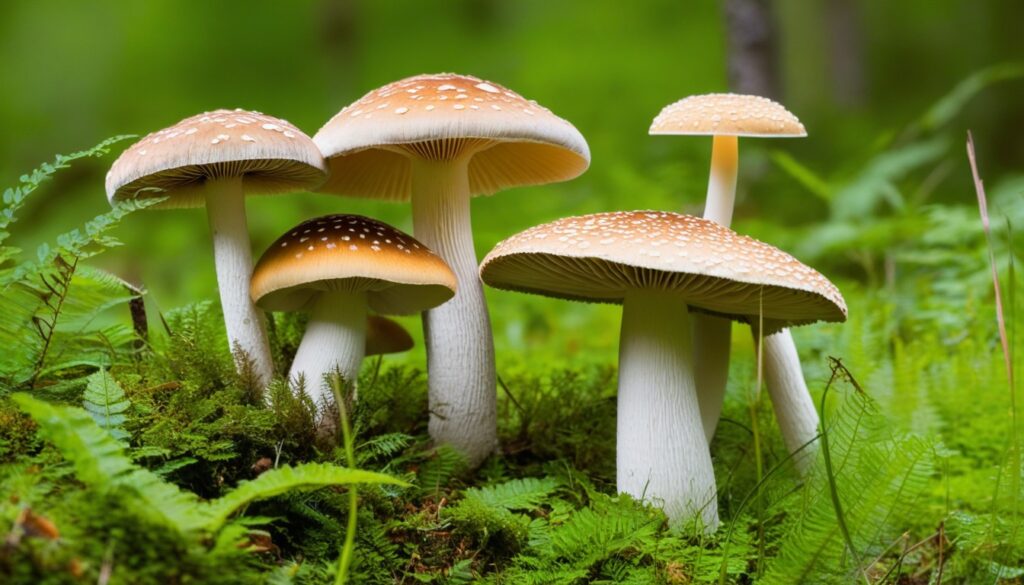Welcome to a world of enchantment, where nature’s hidden treasures await discovery. In this article, we’ll take you on a journey through the captivating world of Marvelous Mushrooms. These fascinating organisms may often go unnoticed, but they hold incredible wonders that are waiting to be explored. From their diversity and unique characteristics to their culinary and medicinal benefits, we’ll uncover the magic of these hidden delights.
Key Takeaways
- Marvelous Mushrooms are incredible organisms that hold many unique wonders.
- They boast a diverse range of species found all over the world.
- Mushrooms play a crucial role in the balance and health of ecosystems.
- They have numerous culinary and medicinal benefits.
- Mushrooms have inspired myths, folklore, and legends throughout history.
Understanding Marvelous Mushrooms
Before we dive into the fascinating world of Marvelous Mushrooms, let’s take a moment to understand what they are and their unique characteristics. Mushrooms are the spore-bearing fruiting bodies of fungi and are essential decomposers in many ecosystems. They come in various shapes, sizes, and colors, and their fascinating life cycle includes a mycelium stage, where the fungus grows underground, and a fruiting body stage, where the mushroom emerges above ground.
There are thousands of species of mushrooms, with each having its own unique characteristics. Some mushrooms are edible and delicious, while others are poisonous and deadly. It’s crucial to have a good understanding of the different types of mushrooms and their identifying features before foraging or consuming them.
To help you navigate the marvelous world of mushrooms, let’s take a closer look at some of the most common types you might come across:
|
Mushroom Type |
Identifying Features |
Habitat |
|---|---|---|
|
Button Mushrooms |
Small, white or brown caps, with short stems |
Cultivated in many parts of the world |
|
Chanterelles |
Trumpet-shaped caps, with ridges instead of gills, golden, yellow, or orange in color |
Forests of North America, Europe, and Asia |
|
Portobello Mushrooms |
Large, flat caps, with thick, meaty stems |
Cultivated in many parts of the world |
These are just a few examples of the diverse and wonderful world of mushrooms. By understanding their features and habitats, you can begin to appreciate the complexity and beauty of these fascinating organisms.
The Life Cycle of Mushrooms
As mentioned earlier, mushrooms have a complex life cycle that consists of two distinct stages: the mycelium stage and the fruiting body stage. The mycelium is a network of underground fungal threads that grow and spread, absorbing nutrients from organic matter in the soil.
Once the mycelium has absorbed enough nutrients, it will develop into the second stage, the fruiting body, which is the part of the mushroom visible above ground. This is where spores are produced, allowing the fungus to reproduce and continue its life cycle.
Types of Mushrooms
As we discussed earlier, there are many different types of mushrooms, each with its own unique characteristics. Some of the most common types you may come across include:
- Button mushrooms
- Chanterelles
- Portobello mushrooms
- Shiitake mushrooms
- Morel mushrooms
These are just a few examples of the amazing diversity of mushrooms out there, which can be found in a wide range of habitats, from forests and grasslands to deserts and wetlands.
“The mushroom is a symbol of beauty, resilience, and adaptability. It reminds us that even in the darkest of places, life can flourish.” – Paul Stamets
With this basic understanding of mushrooms and their characteristics, we are now ready to delve deeper into their importance in ecosystems and their cultural and culinary significance.
The Role of Mushrooms in Ecosystems
While often overlooked, mushrooms play a crucial role in maintaining the health and balance of various ecosystems. These fascinating fungi form symbiotic relationships with plants, recycle organic matter, and contribute to soil health and biodiversity.
The Symbiotic Relationships of Mushrooms
Many mushrooms form mutually beneficial relationships with plants, creating a network known as mycorrhiza. In this relationship, the fungi receive nutrients from the plant, while the plant benefits from increased water absorption and disease resistance. Some mushrooms also form symbiotic relationships with animals, such as ants, providing them with food sources.
Recycling Organic Matter
Mushrooms are important decomposers, breaking down organic matter and returning nutrients to the soil. They can break down tough materials, such as lignin in wood, making it easier for other organisms to decompose them.
Impact on Soil Health and Biodiversity
Mushrooms play a critical role in maintaining soil health, contributing to soil structure, water infiltration, and nutrient cycling. They also promote biodiversity, providing habitats for many other organisms. Some mushrooms, such as the Chaga mushroom, have even been found to have anti-inflammatory and antioxidant properties, further contributing to the health of surrounding ecosystems.
“Mushrooms are the world’s leading recyclers, breaking down organic matter and returning it to the soil. Without them, dead trees and other plant material would accumulate indefinitely, creating a barren and lifeless environment.” – Paul Stamets
The Importance of Protecting Mushrooms and Their Ecosystems
Despite their importance, many mushroom populations are threatened by habitat destruction, pollution, and over-harvesting. It’s important to protect these fascinating fungi, their ecosystems, and the vital role they play in maintaining ecological balance.
Summary
Mushrooms are often hidden from view, but they are essential players in the delicate balance of ecosystems worldwide. From their symbiotic relationships with plants and animals to their role in recycling organic matter and maintaining soil health and biodiversity, these fascinating fungi contribute to the natural world in countless ways.
Marvelous Mushrooms Around the World
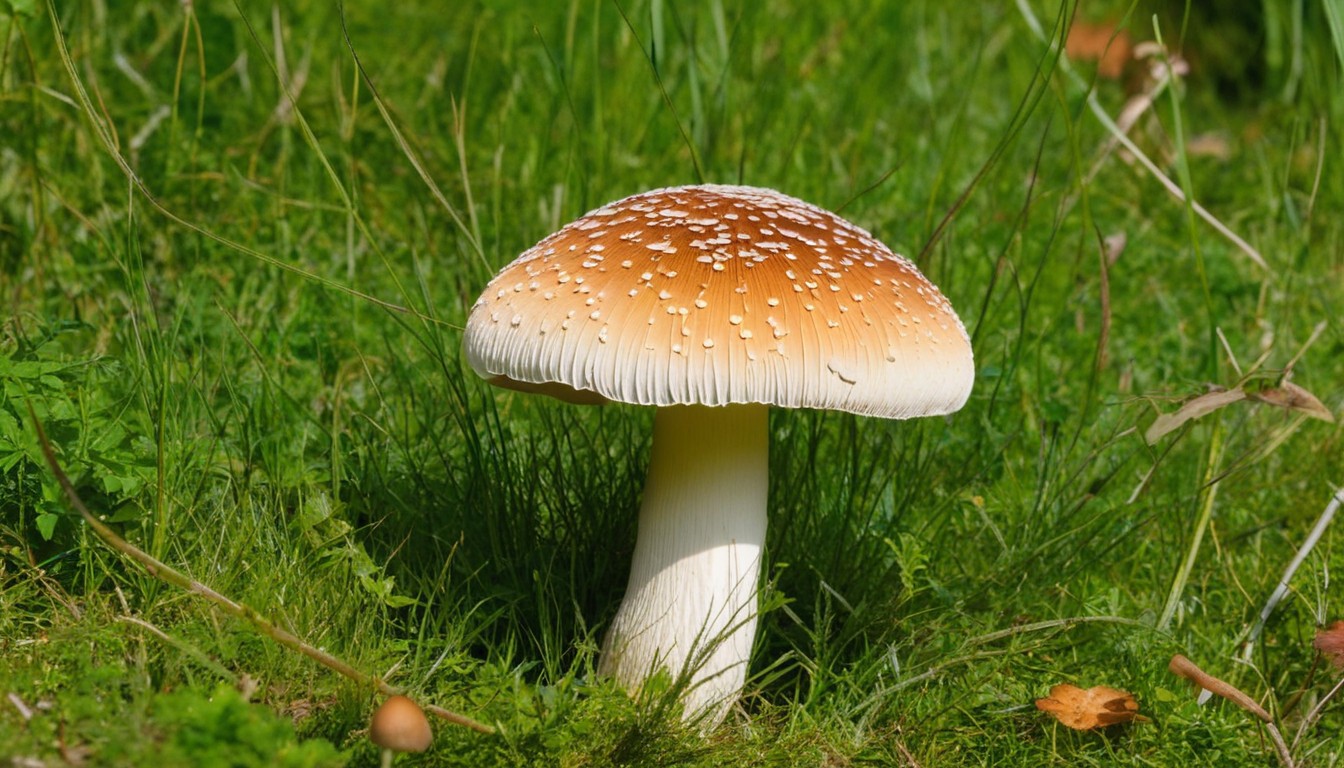
Mushrooms can be found in every corner of the world, and each region boasts its unique species and cultural significance. Let’s take a virtual trip around the world and discover some of these marvels of nature.
Europe
Europe is home to some of the most famous edible mushrooms, such as the French Black Truffle and the Italian Porcini Mushroom, which are considered a delicacy in many cuisines. In Scandinavia, the Fly Agaric mushroom is known for its bright red cap and white spots, a symbol of the winter holidays and Scandinavian folklore.
Asia
Asia is where many medicinal mushrooms, such as the Reishi, Shiitake, and Maitake, originate from. In Japan, the Matsutake mushroom is highly prized and is used in traditional Kaiseki cuisine. In China, the Caterpillar Fungus, also known as the Himalayan Viagra, is highly valued for its medicinal properties and is considered a luxury item.
North America
North America is home to a variety of mushrooms, including the famous Morel and Chanterelle, which are loved by chefs for their firm texture and rich, nutty flavor. The Fly Agaric mushroom is also found in North America and is known for its hallucinogenic properties.
South America
The Amazon rainforest in South America is a haven for unique mushroom species, with many of them being used in traditional medicine by indigenous people. The Amanita Muscaria mushroom, also known as the Fly Agaric, is found in many parts of South America and is often associated with religious ceremonies.
Africa
Africa is home to a wide range of indigenous mushroom species, many of which are used in traditional medicine and cooking. The Chaga mushroom, which is found in East Africa, is highly valued for its medicinal properties and is used to treat a range of ailments.
Australia
Australia has its own unique mushroom species, including the popular, meaty King Brown Mushroom and the more exotic, psychedelic Psilocybin Mushroom. The indigenous people of Australia have a long history of using mushrooms in traditional medicine and spiritual ceremonies.
No matter where you travel in the world, you’re likely to find a marvelous mushroom waiting to be discovered. From culinary delights to medicinal wonders, mushrooms offer a world of enchantment and endless possibilities.
Culinary Uses of Marvelous Mushrooms
Mushrooms have long been a staple in many cuisines worldwide, prized for their unique flavors and textures. From the subtle umami taste of shiitake mushrooms to the meaty richness of portobello mushrooms, these fungi offer a versatile ingredient that can be used in a myriad of different dishes.
One of the most popular culinary uses of mushrooms is in soups and stews. Their earthy flavor and ability to absorb liquid make them the perfect addition to broths and stocks, adding depth and complexity to the dish. For example, the classic French onion soup is often served with a slice of crusty bread and topped with melted Gruyère cheese and sautéed mushrooms for extra flavor.
Mushrooms can also be used in salads, either fresh or cooked. The delicate, nutty flavor of enoki mushrooms pairs well with a light, citrusy dressing, while the heartiness of grilled portobello mushrooms make them a great base for a warm salad with goat cheese and arugula.
Another popular use for mushrooms is in pasta dishes. The rich, meaty taste of porcini mushrooms adds a depth of flavor to creamy pasta sauces such as fettuccine Alfredo, while the earthy flavor of chanterelle mushrooms pairs well with light, tomato-based sauces for a perfect balance of flavors.
Mushrooms are also a popular ingredient in vegetarian and vegan dishes, as they offer a meaty texture and flavor without the need for animal products. For example, a hearty mushroom risotto with arborio rice and parmesan cheese is a comforting and satisfying vegetarian meal.
Recipe: Grilled Portobello Mushroom Burger
If you’re looking for a delicious vegetarian alternative to a classic hamburger, try this recipe for a grilled portobello mushroom burger:
- Preheat grill to medium-high heat.
- Clean the portobello mushrooms and remove the stem. Coat them with olive oil and season them with salt and pepper.
- Grill the portobello mushrooms for about 5-6 minutes on each side until they are tender and have grill marks.
- Remove the mushrooms from the grill and assemble the burger with a toasted bun, lettuce, tomato, avocado, and any other toppings you desire.
- Enjoy your meatless burger!
“Mushrooms are nature’s umami bomb, providing a savory flavor that enhances any dish.” – Chef Niki Nakayama
As you can see, mushrooms offer a world of possibilities for culinary experimentation. Whether you’re a meat lover or a vegetarian, there’s a delicious mushroom dish out there for everyone to enjoy.
Medicinal Wonders: Health Benefits of Marvelous Mushrooms
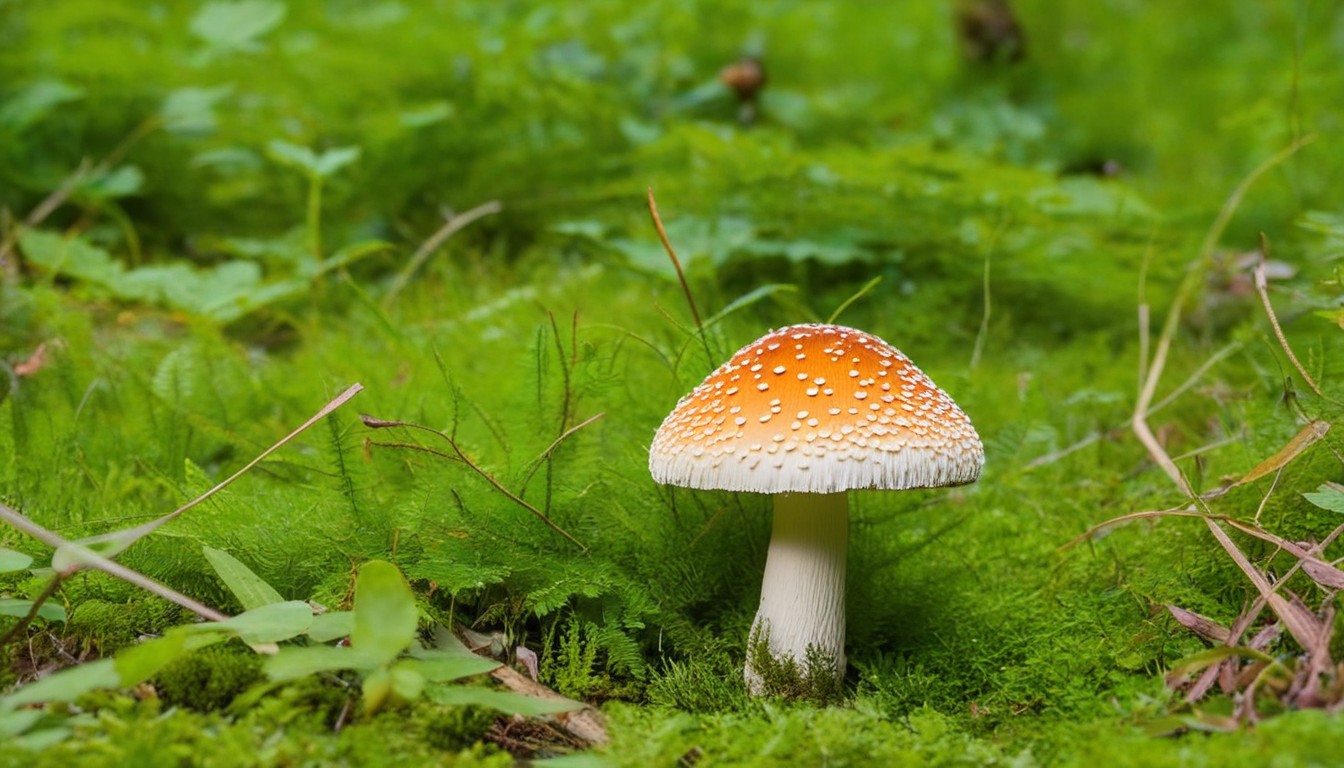
Mushrooms have been used for medicinal purposes for centuries in traditional medicine practices across the world. Their unique chemical makeup makes them a powerhouse for supporting overall health and well-being.
Boosting Immune Function
Certain mushroom species, such as reishi and shiitake, have immune-boosting properties that make them effective in preventing and managing illnesses. They contain beta-glucans, which stimulate the immune system by activating white blood cells and promoting the production of antibodies. Regular consumption of these mushrooms can help keep the immune system strong and resilient.
Managing Stress
Mushrooms are also known to have adaptogenic properties, meaning they help the body adapt to and manage stress. Reishi mushrooms, in particular, have been used for centuries in traditional Chinese medicine to promote relaxation and reduce stress and anxiety. They contain compounds that help regulate the levels of cortisol, the stress hormone, in the body.
Reducing Inflammation
Inflammation is a natural immune response that helps the body fight off infections and repair damaged tissues. However, chronic inflammation can lead to a range of health problems, including autoimmune disorders and cancer. Certain mushrooms, such as maitake and turkey tail, contain anti-inflammatory compounds that help reduce inflammation in the body.
Supporting Heart Health
Mushrooms are a good source of potassium, which helps regulate blood pressure and prevent cardiovascular disease. They also contain compounds that help lower cholesterol levels and reduce the risk of heart disease. Eating mushrooms regularly as part of a healthy diet can help support heart health.
Improving Brain Function
Mushrooms contain compounds that have been shown to improve cognitive function and protect against age-related cognitive decline. Lion’s mane mushrooms, in particular, have been found to stimulate the growth of new brain cells and improve memory and focus.
“Mushrooms really do have medicinal value. They’re not just a food, but a health-enhancing agent which can be added to our meals regularly for optimal health.” – Dr. Josh Axe
Mushroom Folklore and Legends
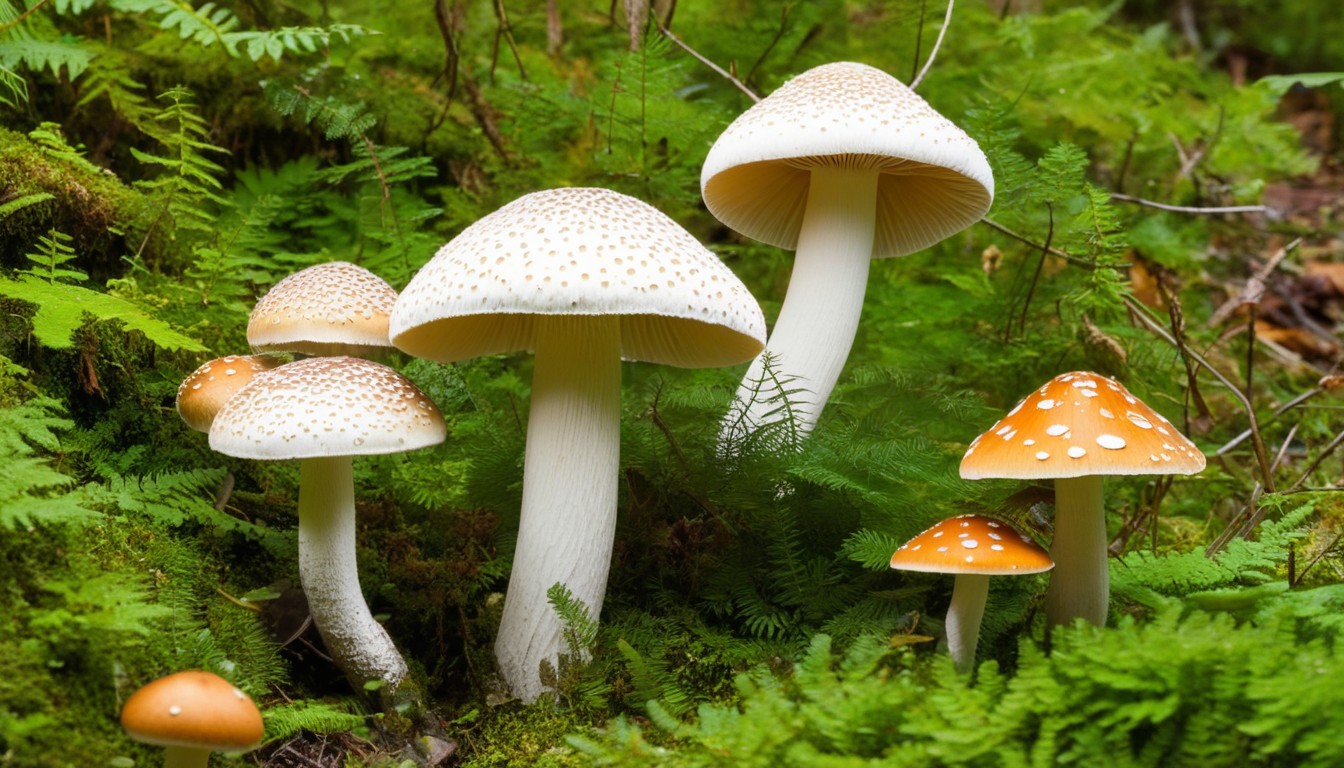
Since ancient times, mushrooms have held a mystical allure, inspiring a wealth of folklore and legends across cultures and continents. From mythological creatures to shamanic rituals, mushrooms have been celebrated for their magical properties and spiritual significance.
“The mushroom is a provocative symbol because it grows in darkness. It’s a symbol of the unknown, the mystery of creation.”
The Hidden Kingdom
Long regarded as a symbol of fertility, mushrooms have been associated with ancient goddesses such as Demeter and Persephone, who were said to have consumed mushrooms for their transformative powers. In medieval Europe, mushrooms were revered as “food of the gods,” believed to have been created by lightning strikes and imbued with the power of divinity.
However, mushrooms were also feared and shrouded in mystery due to their elusive nature and the fact that many species can be poisonous. In Slavic folklore, mushrooms were said to be the homes of mysterious dwarves and gnomes, while in Celtic mythology, they were linked to the underworld and considered a gateway to the realm of the dead.
The Magic of Mushrooms
Perhaps one of the most well-known associations of mushrooms is with psychedelic experiences. The use of hallucinogenic mushrooms has been documented in cultures around the world, from Native American rituals to shamanic practices in South America and Africa.
The 20th century saw a surge of interest in psychedelic mushrooms, thanks in part to the work of counterculture figures such as Timothy Leary and the Grateful Dead. Today, the therapeutic potential of substances such as psilocybin, the active ingredient in magic mushrooms, is being explored in clinical research as a treatment for depression, anxiety, and addiction.
From Fairies to Fashion
The whimsical and enchanting nature of mushrooms has also inspired artists and designers. In fairy tales and children’s stories, mushrooms are often portrayed as miniature homes for woodland creatures such as fairies and gnomes.
In art and design, mushrooms have been featured in everything from paintings and illustrations to fashion and home decor. The iconic mushroom shape and texture have been incorporated into clothing, jewelry, and even furniture, adding a touch of whimsy to everyday objects.
Marvelous Mushrooms: Nature’s Pharmacy
Mushrooms have been used for their medicinal properties for centuries across various cultures. In recent years, modern medicine has recognized the potential benefits of mushrooms and identified several compounds that have medicinal properties.
Beta-Glucans
Beta-glucans are a type of polysaccharide found in the cell walls of mushrooms. They have immune-stimulating properties and help to modulate the immune system. Studies have shown that beta-glucans can help reduce inflammation, lower cholesterol levels, and may have anti-cancer properties.
|
Benefits of Beta-Glucans |
Mushroom Sources |
|---|---|
|
Boosts immune function |
Reishi, Shiitake, Maitake |
|
Lowers cholesterol |
Oyster, Shiitake, Maitake |
|
Anti-cancer properties |
Shiitake, Maitake |
Ergothioneine
Ergothioneine is a sulfur-containing amino acid found in various mushrooms. It has potent antioxidant properties and has been found to protect cells from oxidative damage. Studies have also suggested that ergothioneine may have anti-inflammatory properties and could play a role in preventing age-related diseases.
Psilocybin
Psilocybin is a psychedelic compound found in certain types of mushrooms. While psilocybin is not medically recognized for its benefits, ongoing research suggests it could have potential in treating certain mental health conditions, such as depression and anxiety.
- Please note that psilocybin is not legal in all countries and should not be used recreationally.
Other Compounds
Mushrooms contain other compounds such as polysaccharides, terpenoids, and polyphenols that have various health benefits. These compounds have been found to have anti-inflammatory, anti-viral, and anti-tumor properties, among others.
With their impressive range of health-boosting properties, it’s no wonder that mushrooms are often referred to as nature’s pharmacy. Incorporating mushrooms into your diet or taking mushroom supplements could offer a range of health benefits. However, it’s important to consult with a healthcare professional before making any significant changes to your diet or supplement routine.
Exploring Marvelous Mushrooms: Foraging and Cultivation
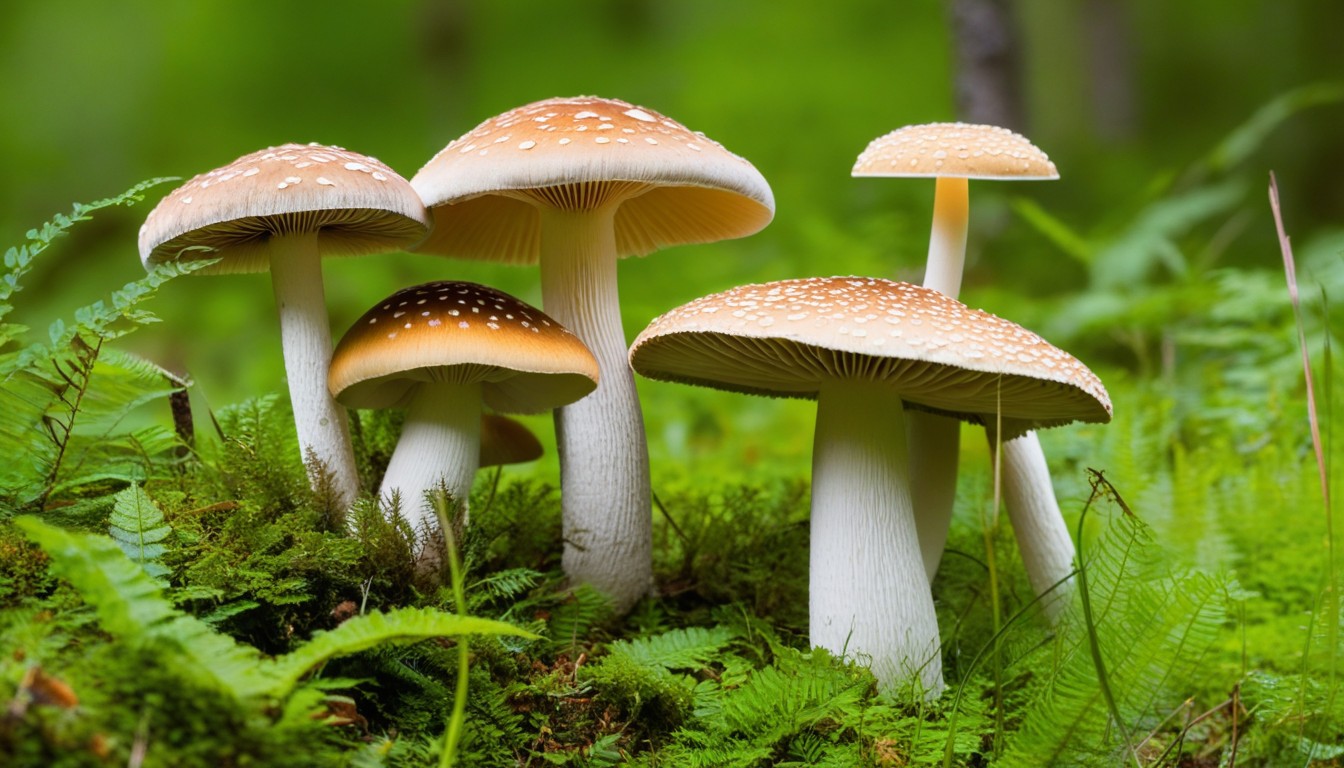
Foraging for wild mushrooms and cultivating them in your garden can be a fun and rewarding experience. Here are some tips and guidance to get you started on your mushroom journey.
Foraging for Mushrooms
Foraging for wild mushrooms can be an exciting and educational experience, but it also comes with risks. It’s essential to know how to identify edible mushrooms and avoid poisonous ones. It’s advisable to go on a guided foraging tour with an experienced guide or attend a mushroom identification workshop before setting out on your own.
When foraging for mushrooms, remember the following:
- Always carry a basket or a breathable bag to avoid mushrooms getting slimy
- Use a mushroom knife or scissors to avoid pulling out the entire root system
- Check with local authorities or landowners for any restrictions or regulations concerning mushroom foraging in the area
- Avoid collecting mushrooms near heavily polluted or contaminated areas
- Only pick mushrooms that are fully grown and leave the small ones to grow further
- When in doubt, don’t eat it!
Cultivating Mushrooms
Aside from foraging for wild mushrooms, you can also grow edible mushrooms in your garden or indoors. Here are some tips to help you get started:
- Choose a suitable location with appropriate temperature, humidity, and light conditions. Different mushroom species have different growth requirements, so do your research before you start.
- Select the right growing medium. You can use various substrates like straw, sawdust, or compost, depending on the mushroom species you want to grow.
- Obtain mushroom spawn or spores from a reliable source. You can purchase ready-made mushroom spawn or start from scratch using spores or tissue culture.
- Follow the instructions carefully. Different mushroom species require different growing techniques, so make sure you follow the instructions specific to your chosen species.
- Be patient. Mushroom cultivation can take several weeks or even months before you see any results.
- Enjoy the fruits of your labor! Once your mushrooms are ready to be harvested, use them in your favorite recipes or preserve them for future use.
By following these tips, you can safely forage for wild mushrooms and cultivate your own delicious and nutritious mushrooms.
Marvelous Mushrooms in Art and Design
From ancient times to present-day, the stunning shapes, vivid colors, and intricate patterns of mushrooms have inspired artists and designers around the world. Let’s take a closer look at how these marvelous organisms have influenced various art forms.
Mushroom Artwork
The unique beauty of mushrooms has been captured in numerous paintings, illustrations, and sculptures. Artists like Cy Twombly, Takashi Murakami, and Giuseppe Arcimboldo have used mushrooms as a central theme in their works, while others have incorporated mushrooms into abstract compositions.
“Mushrooms have been some of my favorite subjects to draw and paint. There is such a wide range of shapes, colors, and textures that it never gets boring.” – Artist, Lisa S.
Fashion and Textile Design
The intricate patterns and textures of mushrooms have also influenced fashion and textile design. The famous mushroom-inspired dress designed by Elsa Schiaparelli in the 1930s is still regarded as a groundbreaking piece of fashion, while today, designers like Alexander McQueen and Stella McCartney have incorporated mushroom motifs into their collections.
Architecture
The unique shapes and structures of mushrooms have inspired architects to create stunning buildings that mimic the intricate patterns of mushrooms. The famous Enokojima Mushroom Museum in Japan is designed to look like a giant mushroom, while the Mycological Twist building in Austria is inspired by the twisting forms of mushrooms.
Mushroom Photography
The natural beauty of mushrooms has also inspired many photographers to capture their stunning shapes, colors, and textures. Photographers like Taylor Lockwood and Alison Pouliot have documented the incredible diversity of mushrooms around the world, while others have used mushrooms as a creative subject for abstract and experimental photography.
Mushroom Design in Everyday Life
The influence of mushrooms can be seen in everyday design as well, from mushroom-shaped lamps and furniture to mushroom-inspired kitchen gadgets and accessories. The unique and playful shapes of mushrooms add a touch of whimsy to any design.
As we can see, mushrooms have made a significant impact on the world of art and design. With their fascinating shapes, colors, and patterns, they provide an endless source of inspiration for creatives around the world.
Conclusion
As we conclude this journey into the world of Marvelous Mushrooms, we hope you have gained a newfound appreciation for these fascinating organisms. From their diverse shapes, sizes, and colors to their culinary and medicinal uses, mushrooms offer a world of wonder waiting to be explored.
The Importance of Preserving our Ecosystems
As we have learned, mushrooms play a crucial role in maintaining the balance and health of ecosystems. With the threat of climate change and deforestation, it is more important than ever to protect these delicate habitats and the organisms that call them home. By preserving our natural environments, we can continue to uncover the hidden marvels of nature.
Join us on the Journey of Discovery
We invite you to continue exploring the beauty and diversity of mushrooms, whether by foraging for wild varieties or cultivating your own in your garden. Let the enchantment of mushrooms captivate your senses and inspire you to appreciate the wonders of the natural world.
Thank you for joining us on this journey of discovery. We hope you have enjoyed learning about the marvelous mushrooms that exist all around us. Until next time, stay curious!
FAQ
What are mushrooms?
Mushrooms are the fruiting bodies of fungi, which are a separate kingdom of organisms. They have a unique life cycle and are distinct from plants and animals.
Do all mushrooms have the same characteristics?
No, mushrooms can vary greatly in terms of size, shape, color, and texture. They can be found in a wide range of habitats and have different ecological roles.
Are all mushrooms edible?
No, not all mushrooms are safe to eat. Some are highly poisonous and can cause serious illness or even death. It’s important to have proper knowledge and skills before consuming wild mushrooms.
How can I identify edible mushrooms?
Identifying edible mushrooms can be challenging and requires expertise. It’s best to learn from experienced foragers or consult reliable resources such as field guides or mycology experts.
Can mushrooms be cultivated at home?
Yes, many types of mushrooms can be successfully cultivated at home. This process, known as mushroom cultivation or mushroom farming, requires specific growing conditions and techniques.
Are there any health benefits of consuming mushrooms?
Yes, mushrooms are known for their nutritional value and potential health benefits. They are low in calories, high in fiber, and rich in vitamins, minerals, and antioxidants. Some mushrooms also contain bioactive compounds with medicinal properties.
Are wild mushrooms safe to eat?
Consuming wild mushrooms carries risks, as some species are highly toxic. It’s important to have proper identification skills or seek expert advice before consuming wild mushrooms.
Can mushrooms be used in vegetarian/vegan cooking?
Absolutely! Mushrooms are often used as a meat substitute in vegetarian and vegan recipes due to their umami flavor and meaty texture. They can be a delicious addition to a plant-based diet.
Do mushrooms have any cultural significance?
Yes, mushrooms have been a part of human culture for centuries. They hold cultural and symbolic meanings in various societies, and some mushrooms have been used in traditional rituals or ceremonies.
Can mushrooms be used for medicinal purposes?
Yes, mushrooms have been used in traditional medicine for centuries and are still used today for their potential health benefits. Some mushrooms contain bioactive compounds that have been studied for their anti-inflammatory, immune-boosting, and anticancer properties.
Where can I find more information about mushrooms?
There are many resources available for learning about mushrooms, including books, websites, and local mycology societies. Additionally, attending mushroom forays or workshops can provide hands-on learning opportunities.

